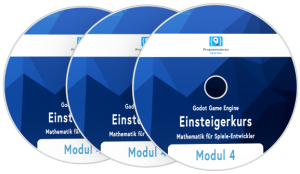

The problem is keeping it centered when the it changes size.
#Godot camera2d code#
It is there where may want to hack it with some code that mixes rect_position and position.Ĭentering a Control in a Node2D is not hard per se (there are Containers, anchors and margins, and good old hand positioning). But you will find problems with scaling and centering, because Node2D don't have a size that the Controls can use (some - such as Sprite - have a visual size as virtue of their Texture, which is not exposed as a property, and Control does not use it). For example, if you want a Label or a ProgressBar (which are Control) following a Node2D. You can - and you may need to - place Controls inside of a Node2D. See also the proposal: Redesign how user interface (Controls) scaling is presented to the user. However, let us be honest, it is not working great. This all should make it easier for new user to figure out how Control positioning works. This also helps in discovering these properties from the code editors, since they would show up together in autocomplete. Similarly, one of the groups you find is "Rect".

And that is to ease grouping them in the inspector panel.įor example, the "Anchor" group will have all the properties which name begin with anchor, and that prefix is not shown on the name of the property. There is a reason to prefix properties in Godot. Why can't they have the same name?īeyond it being a reminder that they aren't the same thing. Ok, they are different, but they do - to a first approximation - the same thing. I should also mention that there are "global" version of these properties, because they are positioned respect to their parent. It is not the case that some nodes got stuck with one name or the other or something like that. For example, you can position a control by anchors and margins, or by placing it in a Container, but then animate the rect_position for effect.Īs you can see, position and rect_position are two different things. And yes, there is also rect_rotation and rect_scale which throw a wrench on the above explanation, but it works as one would imagine.Īnd I say intended because you can mix these. Where rect_position is position from the top left corner of parent. For example, the leftmost part of the control will be positioned at anchor_left * parent_width + margin_left. The abstract is that the anchors are factors, and the margins are offset. By anchors ( anchor_*) and margins ( margin_*).It is placed in a Container (Which are also Controls), and the Container decides how it is positioned, taking into account "Size Flags" (that is what they are for).Instead a Control is intended to be positioned in one of these ways: Meanwhile position, rotation, rotation_degrees and scale are for ease of use. And this is how a Node2D is actually positioned. However, you need to know that a Node2D also has a transform property, of type - you gusseted - Transform2D.

Which, as you would know, is not the same thing, because a Transform not only has position but also rotation, scaling, and such. In fact, some people has proposed renaming the transform property to "position".

Let us talk about how the positioning of these sets of nodes differ… If you have ideas of how the naming can be better, you may open a proposal ( as an issue on github). That in particular has changed for Godot 4.0. For starter 2D nodes say "2D" in the name, but 3D nodes don't (e.g. There is a call for an icon redesign here: Tweak editor node icons to be distinguishable without relying on color (colorblind-friendly).Īnd yes, there is some naming mess. And yes, that is an accessibility concern regarding color vision deficiency. All Controls are green, all Node2D are blue, and all Spatials are red.


 0 kommentar(er)
0 kommentar(er)
